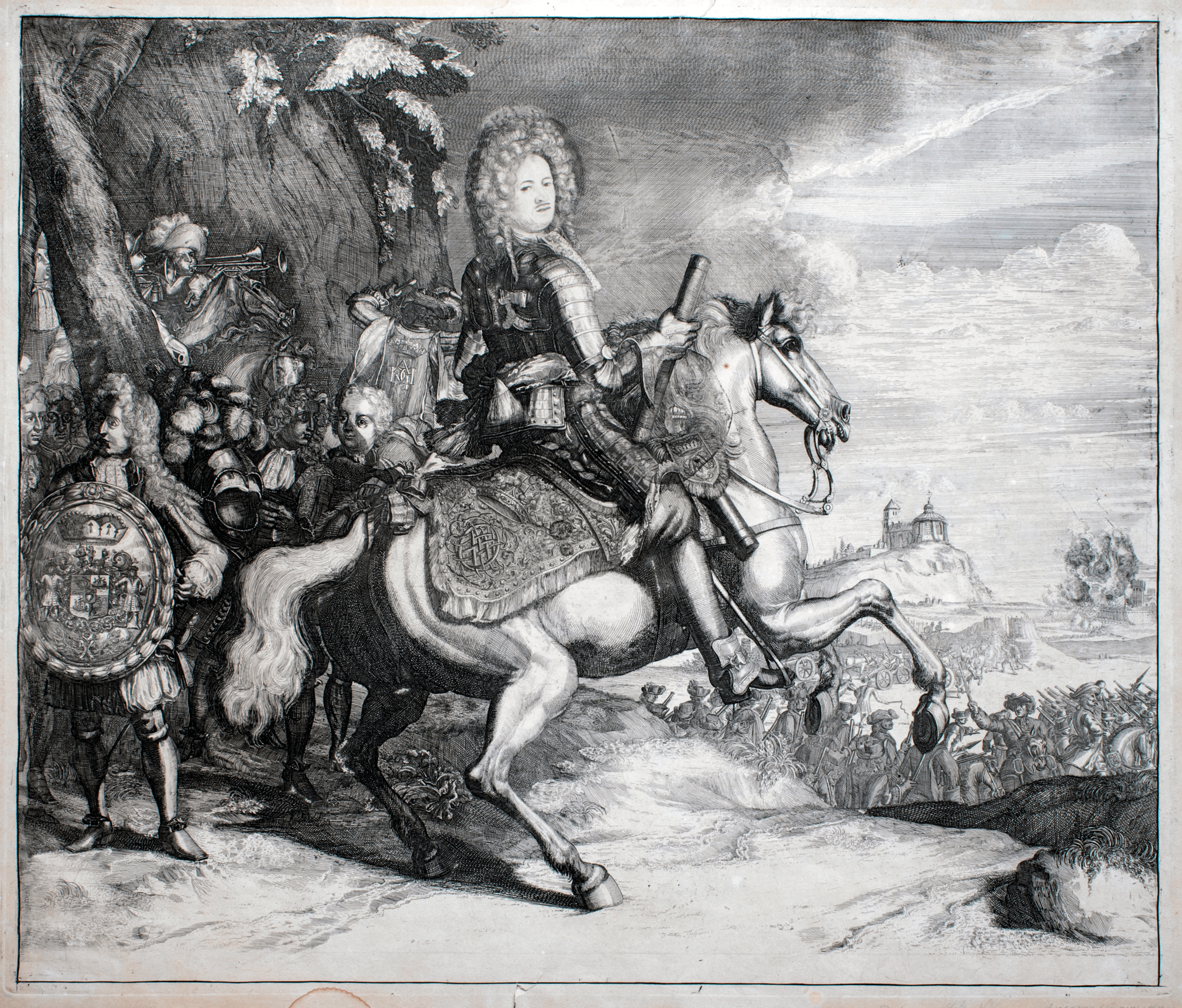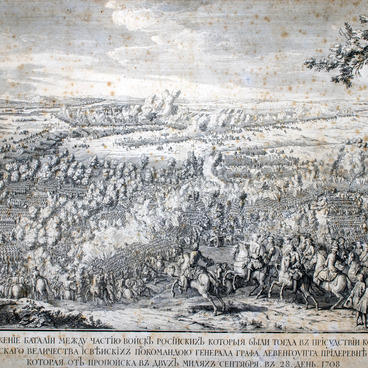Alexander Danilovich Menshikov (1673–1729) was the son of a court groom. He began his career in Peter’s “toy army”, became an orderly of Peter I, and eventually became one of his closest associates. The first governor of St. Petersburg, His Serene Highness the Prince, a brilliant commander, president of the College of War, Menshikov enthroned Catherine I and became the head of the Supreme Privy Council becoming the de-facto ruler of the Russian Empire. However, under Peter II, he was deprived of his ranks and property, exiled and spent the last years of his life in Berezovo.
This portrait of Alexander Menshikov was paired with the portrait of Peter I.
In the second half of the 19th century, the engraving attracted the attention of Dmitry Rovinsky, who attributed it to the Dutchman Adriaan Schoonebeeck, and considered the event depicted in the background to be the victory at Ivangorod in August 1704. Later it was established that the engraver was not Schoonebeeck, but in fact his stepson and student Pieter Pickaert, and the event in the background could be the battle of Kalisz that took place on October 18, 1706.
There is another version that the engraving was made by the Dutchman Romeyn de Hooghe. Schoonebeeck was his student and could own the prints and even the engraving plates of his mentor. In this case, it would have been enough for Pickaert to use ready-made cliches and change some of the details. The hypothesis was refuted, although Pickaert could really use Hooghe’s works as a reference.
The art critic Maria Alekseyeva believed that the paired portrait of Menshikov and Peter suggested an event in which they both participated. Before Poltava, the only such event was the siege of Narva.
In the engraving Menshikov accompanied by an entourage sits on a rampant horse. The scale of the figures is deliberately distorted so that the main character immediately stands out among other characters.
Art historians note two inaccuracies in the portrait. Firstly, on the princely coat of arms (on the shield in the hands of the squire), the engraver depicted three ship emblems instead of one. Secondly, Menshikov is depicted with a field marshal’s baton, which he received only after Poltava. An error or deliberate glorification — this still remains inconclusive.
When comparing the two portraits, one may notice that Peter’s portrait has an inscription, while there is no inscription on Menshikov’s portrait, although there is space for it. It is known that the original portrait of Peter I came out unsuccessful, as the tsar’s face was not recognizable and it was forbidden to replicate it. Alexey Zubov fixed Pickaert’s work and gave the tsar recognizable features. Due to this fact, the portrait of Alexander Menshikov was never completed.

